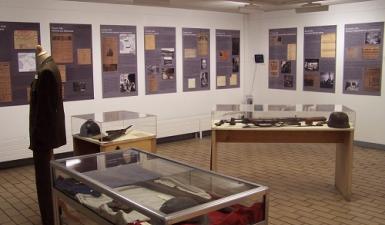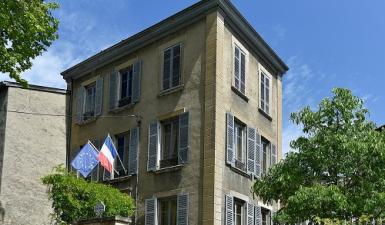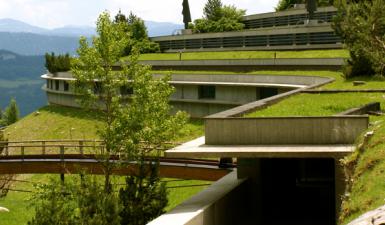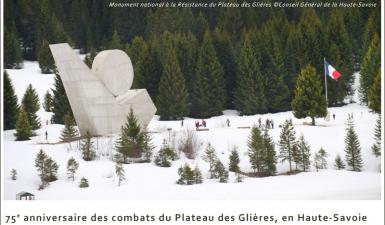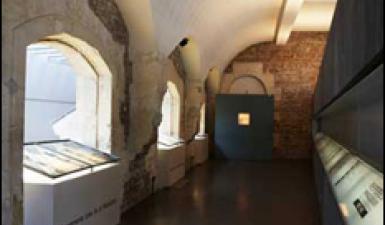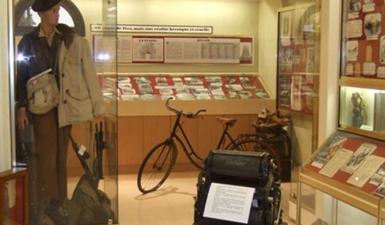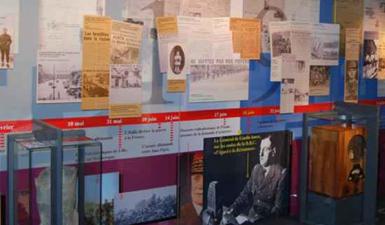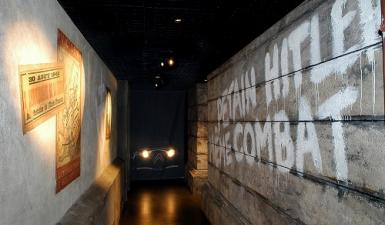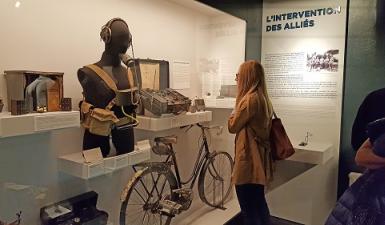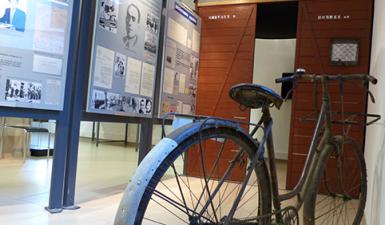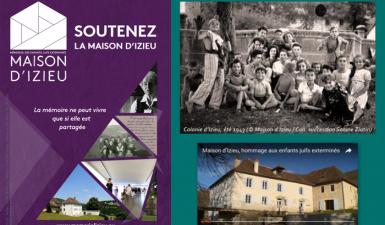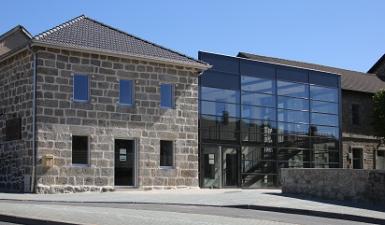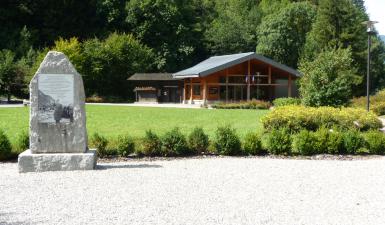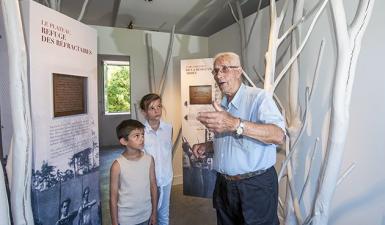Remembrance tourism in Auvergne-Rhône-Alpes
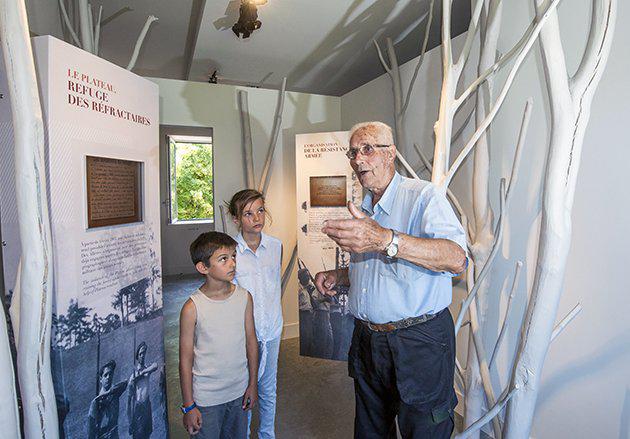
Contents
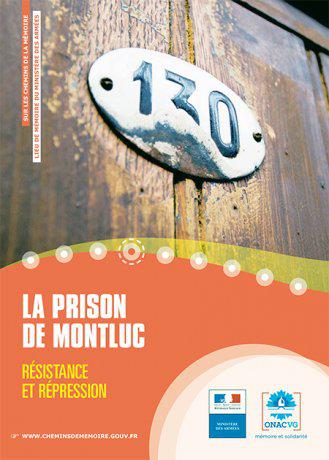
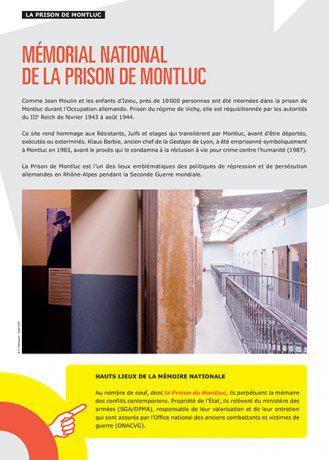
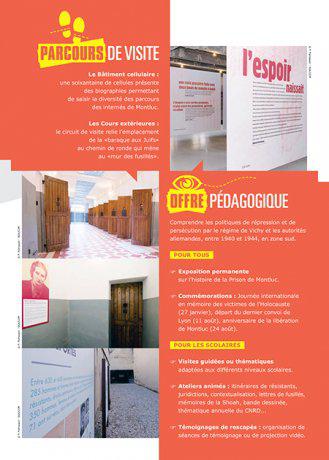
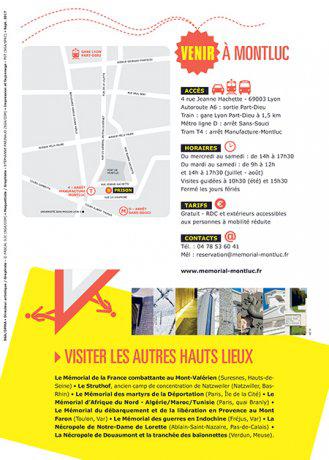
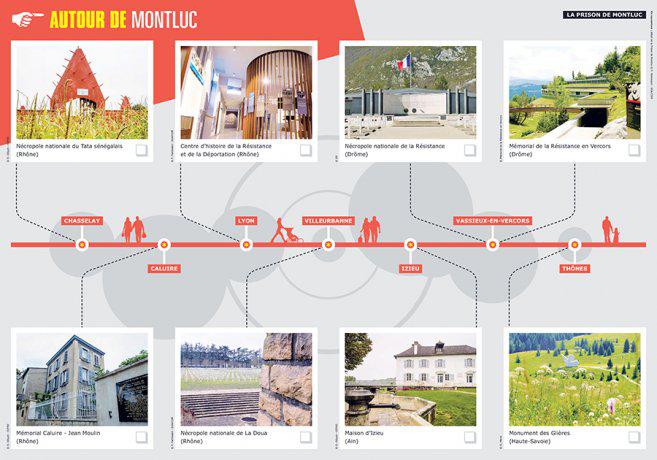
Summary
DATE: 2 December 2011
PLACE: Lyon
OUTCOME: Official founding of Réseau Mémorha
OBJECT: Réseau Mémorha is a regional network of Second World War history museums, sites, institutions, cultural organisations and researchers into remembrance issues.
The Second World War left deep scars on the Auvergne-Rhône-Alpes landscape. Today, the region tells its story through its museums, memorials and history centres, all of which are coordinated at regional level by Réseau Mémorha to ensure the consistency of their cultural and remembrance offering.
A recently created administrative unit, the Auvergne-Rhône-Alpes region is still searching for some kind of geohistorical unity. Its varied terrain stretches from the Massif Central to the highest Alpine summits, the Loire basin to that of the Rhône, in a mosaic of landscapes. While the Auvergne is in the heart of France, Rhône-Alpes occupies its eastern fringes, which underwent continual transformations until Savoy was annexed to France in 1860.
Due to its location on the borders of Switzerland and Italy, with access to the Mediterranean via the Rhône corridor (a major transport axis since Antiquity), a particularly dynamic industrial fabric (coal mining, iron and steel, chemicals, rubber, textiles, paper and electronics) and the existence of important urban centres, the region was historically a staging-post, attracting migrant settlements and cultural synthesis. The mountains of this vast territory are commonly represented as a place of protection for men and women down the ages: Protestants sought refuge in Vivarais and Dauphiné after the Revocation of the Edict of Nantes and, during the Second World War, those avoiding compulsory labour service in Germany joined the maquis of Beaujolais, Jura and Margeride. It is to the latter period, particularly well illustrated in Auvergne-Rhône-Alpes, that we shall turn our attention, as we roam the region’s paysage-histoire (‘landscape-history’), to borrow Julien Gracq’s expression, exploring places that are today firmly embedded in the collective memory, together with other, less well-known sites.
EXCEPTIONAL SECOND WORLD WAR HERITAGE
Like Normandy and Provence, Auvergne-Rhône-Alpes possesses exceptional Second World War heritage. Numerous remembrance sites and a myriad of discreet locations welcome visitors, bearing witness both to the darker aspects of wartime (collaboration, internment, repression, persecution, physical destruction and massacres of civilians) and to brighter aspects, such as the different forms of resistance (armed, civilian, intellectual, spiritual, urban and rural) and solidarity. As early as the 1920s and 1930s, exiled Armenians, Spaniards, Germans and Italians came here, fleeing persecution, dictatorship or civil war. After the French State was installed, they were joined by minorities subject to arbitrary racial laws. Thus, large numbers of foreign Jews found refuge in Dieulefit (Drôme), Megève (Savoie), Villard-de-Lans (Isère), Vic-sur-Cère (Cantal) and Chambon-sur-Lignon (Haute-Loire), holiday resorts with a flourishing hotel trade and social and medical facilities. When the Vichy Government brought in its anti-Semitic policy, the warm welcome they received gave way to rescue actions, as humanitarian organisations arranged their passage to Switzerland.
From very early on, the Auvergne-Rhône-Alpes region was the scene of large-scale resistance actions, which were further stepped up when German troops arrived; a stream of actions, some heroic, some tragic, such as the rising of the maquis of Mont Mouchet and Vercors against the occupying German army, and the fleeting restoration of the Republic in Annonay (Ardèche) in the summer of 1944. Prominent figures engaged in the Resistance were involved to varying degrees in actions in the region, like Jean Moulin, Lucie and Raymond Aubrac, the journalist Yves Farge, writer Jean Prévost, Colonel Henri Romans-Petit and Abbé Alexandre Glasberg.
Among the remembrance sites and areas that are representative of the period, we can cite, in no particular order: the spa town of Vichy, chosen as capital of the French State; the Maison d’Izieu (Ain), a memorial to the Jewish children murdered after their arrest on 6 April 1944; the École des Cadres d’Uriage staff training school (Isère), a laboratory for national revolutionary ideology; the Ferme d’Ambel (Vercors-Drôme), considered one of the first French maquis; Fort Barraux (Isère), where foreign Jews and Gypsies were interned; the Montluc National Memorial (Lyon), a military prison of the Vichy regime, requisitioned by the occupier; and the Murat Deportees Memorial (Cantal), in memory of the 120 people deported in retaliation for the events of June 1944.
The promotion of these sites and the historical figures associated with them raises the question of the choices inherent to remembrance policy, past and present, as a result of which certain remembrance sites of particular interest may be given prominence to the detriment of others, overshadowing the lesser-known sites. Meanwhile, voluntary organisations, researchers and artists campaign for public recognition of ignored or neglected subjects, through books, exhibitions, films and monuments.
In Auvergne-Rhône-Alpes, a network was founded in 2011, with support from both central and regional government. Comprised of voluntary organisations, researchers and remembrance sites, Réseau Mémorha studies the redeployment of Second World War remembrance across the region, promoting partnerships for the implementation of cultural and scientific development projects.
FROM REMEMBRANCE PILGRIMAGE TO HERITAGE DESIGNATION
At the end of the war, certain sites were recognised as particularly emblematic by the French authorities, and remembrance ceremonies were held there in the presence of State dignitaries. They immediately became pilgrimage sites. This was the case of the maquis cemetery of Les Glières (Morette, Haute-Savoie), where families flocked to the graves of their loved ones. Vercors similarly attracted large numbers of “remembrance pilgrims”, in particular Vassieux (Drôme), the site of savage repression and systematic destruction. This martyred village made a powerful impression on visitors, its rebuilt houses, tricolour flags, monumental sculptures, shells of German gliders and numerous stelae forming a tableau of remembrance.
In the 1960s and 70s, these “remembrance territories” saw the opening of the first voluntary museums, in Grenoble (Isère) in 1966, Romans (Drôme) in 1974 and Bonneville (Haute-Savoie) in 1979, then over the following decade in Frugières-le-Pin (Haute-Loire) in 1982 and Nantua (Ain) in 1985. In these “hotspots” of Resistance remembrance, to borrow the expression coined by Serge Barcellini, chairman of Le Souvenir Français, Resistance veterans played a central role, sharing memories, collections and relics, and telling their own battle stories.
Loire Memorial to the Resistance and Deportation.
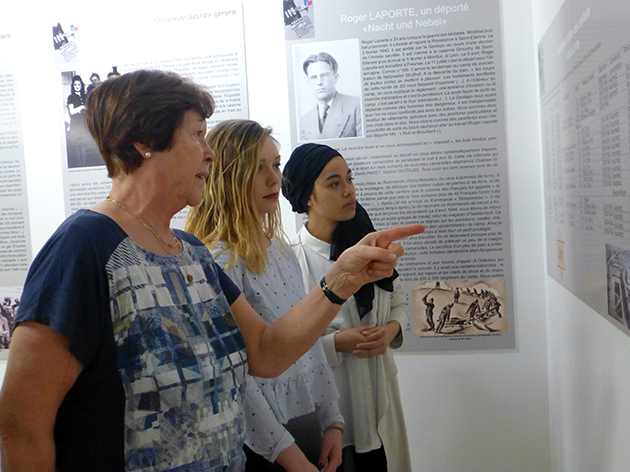
© Mémorial de la Résistance et de la Déportation de la Loire
In the 1990s, as surviving veterans became fewer, some local councils got to grips with the issues of managing local remembrance. A proactive remembrance policy was put in place, embodied by educational outreach officers. It was a civic and political initiative, by institutions keen to be the heirs of Resistance values and curb revisionist movements. It was also a question of identity for some local areas, reliant on the events of the Second World War to distinguish themselves, as in the case of Lyon and Grenoble, which both claimed the title of “Resistance capital”.
Political interests became aligned with the efforts of the voluntary sector, and support, mostly in the form of funding, was given for the creation of new sites, such as the Le Teil Museum (Ardèche), which opened in 1992, and the Saint-Étienne Memorial (Loire), in 1999.
This shift from the field of memory to the development or “professionalisation” of heritage at local level, was part of a nationwide trend which saw the establishment of clear civic and educational aspirations towards the end of the 1990s.
In the early 2000s, government support for remembrance sites took on a new face, and some sites run by the voluntary sector were transferred to State hands. Through the bequest of their collections to local authorities, voluntary-sector museums like the one in Mont Mouchet (Allier) and, more recently, the Museum of the Resistance, Internment and Deportation , in Chamalières (Puy-de-Dôme), were incorporated into the heritage departments of municipalities, city councils and even the Auvergne-Rhône-Alpes regional authority. This dynamic reinforced the process of heritage designation of remembrance sites across the region.
NEW FORMS OF REMEMBRANCE TOURISM AND TRAVEL
Today, new forms of remembrance tourism are offered to the public, sometimes on their own initiative. These take the form of themed urban trails or “remembrance walks”, which connect museums and commemorative monuments to less developed sites: the camp of a unit of the Chantiers de la Jeunesse, a mountain barn that housed a camp for Compulsory Labour Service objectors, examples of postwar reconstruction, etc. These diverse experiences show a desire for direct contact with what is regarded as the truly authentic, a desire which prompts some to embark on the trail of remembrance.
In addition to the scientific information given by guides and other mobile apps, these new forms of tourism offer an element of surprise, as experienced by the writer Antoine Choplin (À contre-courant, Éditions Paulsen, 2018), who, climbing towards the source of the Isère in the hills above Bourg-Saint-Maurice, was distracted by a curious building: “I rounded a bend and came upon a little stone fort dating from the Second World War. An old wooden sign hanging from the wall read: Châtelet Fort - 6th BCM. Alpine Maginot Line 1940. Two simple depictions of machine guns on stands framed the year. I am struck once more by how, even in the remotest of places, we are pursued by history. Wherever you are, its shine and stale odours linger on. It reappears in an inventive plurality of forms, with its meaning often made clear by first-hand accounts or memorials, or sometimes left more enigmatic.”
These spontaneous or guided physical trails, in combination with virtual ones (accessible remotely via digital devices), are consistent with the new tourism practices of French and foreign visitors. They are also in keeping with the new forms of “remembrance tourism” being developed by the French Armed Forces and Economic Affairs ministries. In 2016, as part of their joint call for projects to encourage the development of innovative, digital resources for use in remembrance tourism in France, and with support from the Regional Directorate for Cultural Affairs (DRAC) and the regional authority, Réseau Mémorha came up with the Mémospace digital portal. At the heart of this first ever digital resource to catalogue the Second World War remembrance sites of an entire region is an interactive map, which makes it easy for users to plan both leisure and educational visits, as well as put together themed trails. Drawing on the advice of researchers, teachers, professional guides, remembrance organisations and museums, it is intended as a platform for the development, sharing and promotion of knowledge.
The Museum of Mont Mouchet

The Museum of Mont Mouchet. © Philippe Mesnard
Located in the commune of Auvers, on the border of Cantal and Lozère, this major site for the Resistance in Auvergne is open to visitors from 1 May to 30 September. Renovated in 2009, it charts the history of the Resistance in Auvergne, and in particular in Margeride. It situates events in the national and international context of the time, and offers a comic-strip trail for younger visitors.
The Senegalese Tata

The Senegalese Tata National Cemetery © A. Karaghezian/ECPAD/Défense
In the commune of Chasselay, on the very site where 51 Senegalese riflemen were massacred by the German army in the fighting of 19 and 20 June 1940, this cemetery, inaugurated in November 1942, contains the graves of 198 Senegalese riflemen who died for France. Every year, on 11 November, a ceremony is held on this unique site, built in the Sudanese style, bringing together the inhabitants of the village and the African diaspora of Lyon.
Isère Museum of the Resistance and Deportation

Isère Museum of the Resistance and Deportation. © Office de Tourisme Grenoble-Alpes métropole
Built in the 1960s, on the initiative of teachers, Resistance members and deportees, this pioneering museum charts the history of the Second World War based on local events and the stories of Resistance fighters. Rooted in its era, it sheds light on the values of the Resistance and on human rights, through its events programme and educational outreach work. The museum is open every day (free admission).
Author
Réseau Mémorha
Read more
Website
Online bibliography
‘Le tourisme de mémoire, un enjeu national’, Laure Bougon, in Les Chemins de la Mémoire magazine, no 253, March/April 2016
‘Les rencontres du tourisme de mémoire 2015’, Guillaume Pichard, in Les Chemins de la Mémoire magazine, no 253, March/April 2016
‘Le tourisme de mémoire en Alsace’, Alsace Destination Tourisme, in Les Chemins de la Mémoire magazine, no 259, June/July 2017
Articles of the review
-
The event
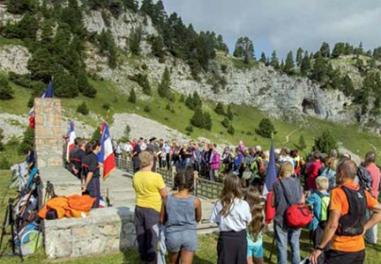
A new national cemetery in Vercors
In 2018, the French State will acquire the Pas de l’Aiguille site, in the department of Isère, the 274th military cemetery to come under the responsibility of the Ministry of the Armed Forces. This will complete the process of acquisition of the three cemeteries in Vercors, begun in 2014. ...Read more -
The figure

Nantua Museum
In a redesigned layout, accessible to all, the Ain Museum of the Resistance and Deportation gives an up-to-date interpretation of the events of the Second World War, through the experiences of the inhabitants of the Ain and the strategic issues of importance to the department.
Read more -
The interview
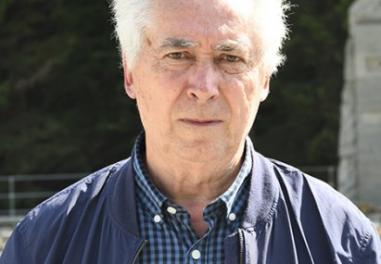
Gérard Métral
Il est le fils d’Alphonse Métral, l’un des fondateurs de l’association des Rescapés des Glières. Après des études en arts plastiques à Paris, il est l’assistant du sculpteur Émile Gilioli, auteur du Monument national à la Résistance des Glières et il préside aujourd’hui l’association des Glières. ...Read more


